Malpas Service Reservoir (2017)
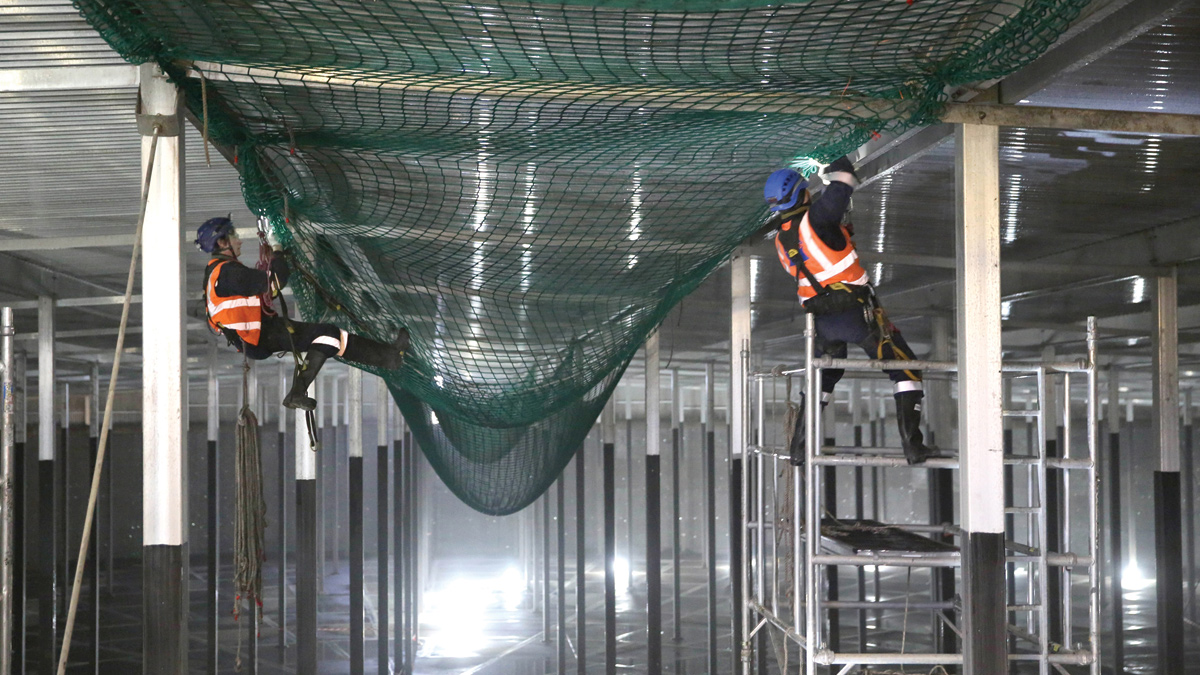
Carrying out work on the roof internal required an extensive area of safety netting - Courtesy of Stonbury
Service reservoirs play a key, if sometimes unsung, role in the supply of clean water within the UK. While most are far less visible and well known than the open reservoirs and other sources they serve, they balance supply and peak demand and ensure that customers’ taps never run dry. The refurbishment of one such service reservoir dating back over a century has given it an additional 30-year lease of life at a fraction of the cost of building a new one. But undertaking the contract was not without its technical challenges. This article sets out the work undertaken earlier this year by Stonbury on behalf of United Utilities at Malpas Service Reservoir, Cheshire.
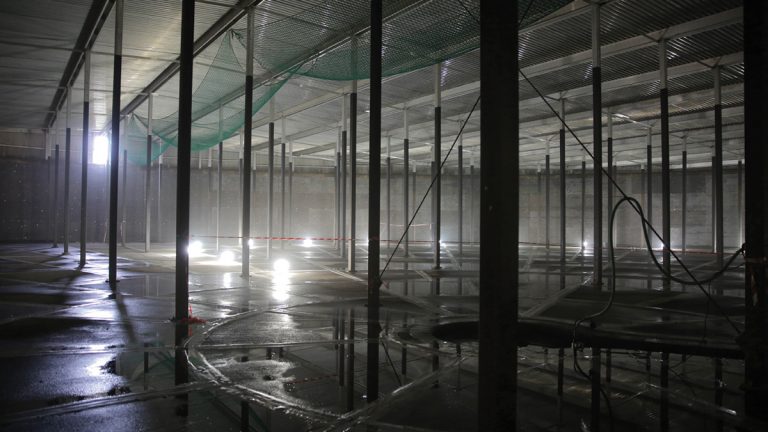
Applying a total of 3,804m of Thoroflex overbanding created a spider web effect in the circular-shaped reservoir – Courtesy of Stonbury
Project background
In common with a large number of service reservoirs, Malpas Service Reservoir, owned and operated by United Utilities, dates back many years. The 20.5ML balancing reservoir was built in 1913 close to the village which gave it its name and lies close to the southern border of Cheshire, a few miles from the border with Wales.
Then, as now, it formed an important ‘staging post’ for water flowing from Lake Vyrnwy in North Wales into the North West.
Lake Vyrnwy was constructed in the 1880s with a capacity of 59.7GL, originally to supply water to Liverpool via a 68-mile aqueduct constructed by Liverpool Corporation. Other pipelines were subsequently added, and the water from Lake Vyrnwy now forms part of a network of sources supplying a much wider area.
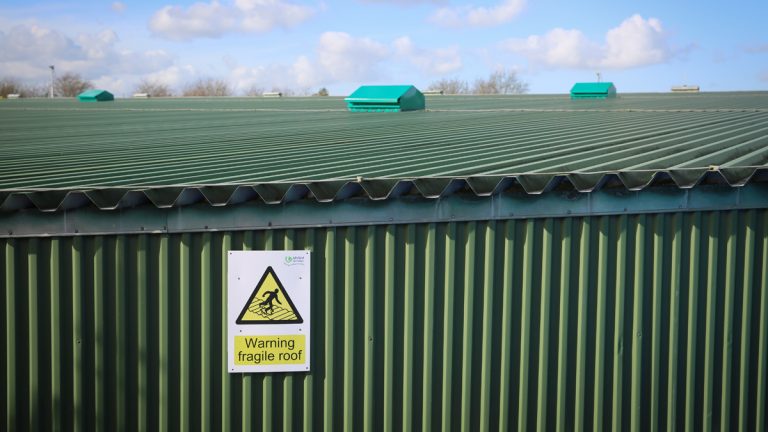
Part of the project included refurbishment of the roof vents, which were letting in rainwater – Courtesy of Stonbury
Today, the Malpas Reservoir helps service a population across a wide area of Cheshire. While originally it was built as an open tank for clean water storage, after regulations changed, the circular tank was enclosed with a steel-clad roof.
Having served its purpose well for over a hundred years, time has now taken its toll on Malpas. Recent investigations discovered water ingress to the tank and the existing brickwork walls were found to be in a poor state. Stonbury, specialist contractors to the water industry, was commissioned to undertake a comprehensive internal refurbishment together with some external repairs.
The project came with a number of challenges – not least carrying out work on the roof internally, where roof vents were allowing in rainwater. This required erecting scaffolding and an extensive area of safety netting. External access to the roof also posed safety risks as the roof had a low load bearing capacity.
In addition, the contract came with a tight deadline of just 12 weeks because of the need to get the reservoir back into use to meet the higher customer demand of water in late spring.
The client specified a very high quality surface internal finish, ensuring that the reservoir will enjoy the maximum service length after completion. This raised the contract value to in excess of £500,000, but the higher specification has given the service reservoir an expected 30 years of additional life; against an estimated new build cost of £5m.
Stonbury assigned a team of 15 full time personnel to the project, including specialist contractors for the steel fabrication and construction of new stainless steel stairs within the reservoir.
Work commenced in November 2016 and was completed in early April 2017.
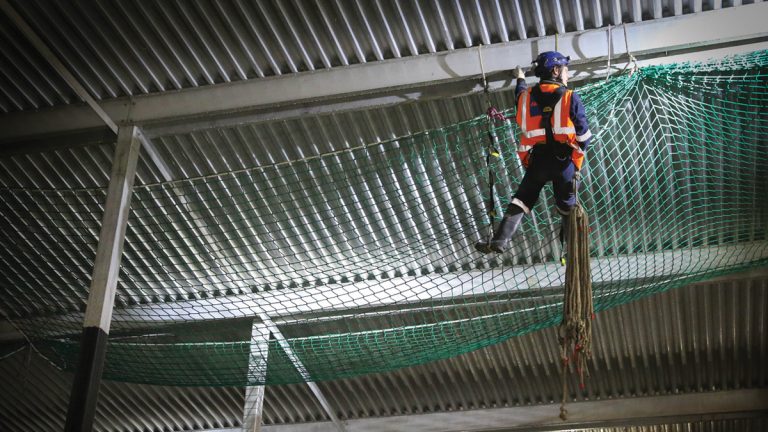
A separate team erected scaffolding and fixed safety netting to the roof, providing safe internal access to the vents – Courtesy of Stonbury
Scope of works
Internal – complete refurbishment
- Removal of flume from centre of tank.
- Grit blasting to walls and surfaces.
- Cleaning of Staffordshire blue engineering bricks.
- Preparation work to floors, before complete overbanding towards floor centre (spider-web effect).
- Mesh fixture to all wall surfaces.
- Concrete spray (30mm Sika 133 gunite) over the mesh creating a new wall surface.
- Installation of scaffolding and safety netting to roof internal (for safe external works).
External
- Refurbishment of roof vents.
Project progress
The project commenced with Thoroflex overbanding to the floor joints, applying the longer lengths first while keeping the joints clean ready for the welding. Ultimately, some 3804 metres of overbanding were required to cover the 3849m2 of flooring creating a spider web effect in the circular-shaped reservoir.
Priority was given to completing the joints near the flume first, so it could be fixed back into position. At the same time, another team commenced grit blasting the walls to prepare them for resurfacing, as well as cleaning the other surfaces; including the steelwork within the reservoir. Work started first on the walls at the lower section, allowing regular checks on the profile to ascertain if the amount being removed was adequate and even.
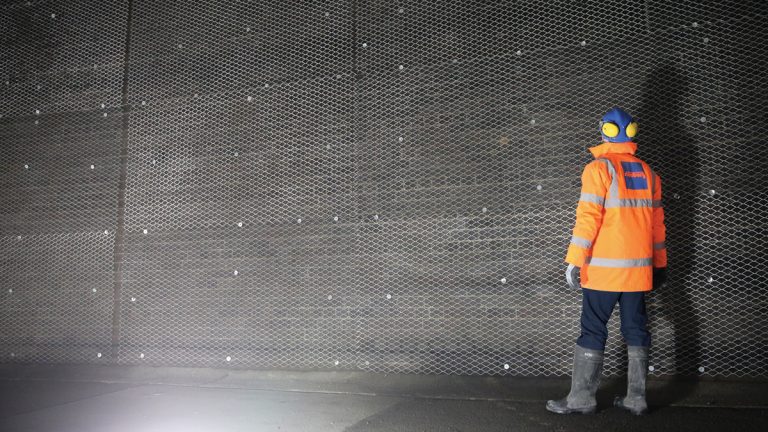
Fixing mesh across a total area of 1200m2 created a suitable surface for the concrete spray to be applied – Courtesy of Stonbury
A team of specialist engineers then undertook a detailed survey of the roof vents (which had been allowing in rain water) and the grating to the floor channel to determine the scope of work required, while the blasting grit was removed from the reservoir floor by another team.
By week 6 of the project, the overbanding to the floor of the reservoir had been successfully completed, and the internal surface of the reservoir walls, comprising Staffordshire blue engineering bricks, had been sufficiently prepared for mesh to be fixed to the walls across 24 bays and a total area of 1200m2.
Fixing the mesh, which ultimately took a total of 15 days, created a suitable surface for the Sika 133 gunite concrete spray to be applied. In total, 55,000 litres of concrete spray were applied to the perimeter walls.
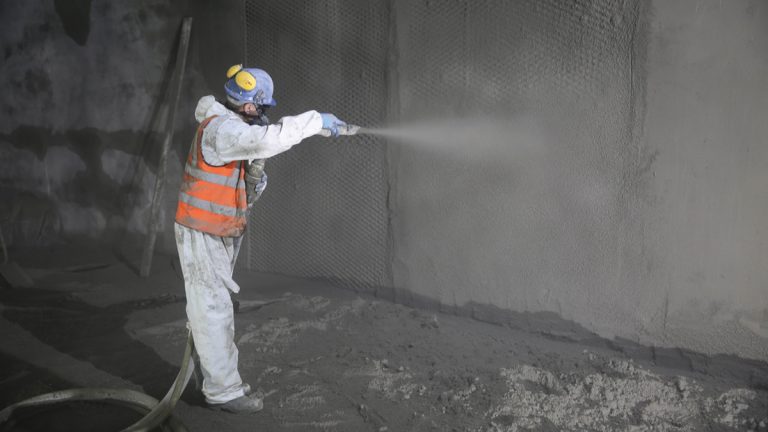
A total of 55,000 litres of Sika 133 gunite concrete spray were applied to the perimeter walls – Courtesy of Stonbury
Timber screed rails were then fixed into place and spraying of the reservoir walls began in week 5, once the mesh had been applied in the first few bays.
To stay in line with the contract schedule, a target of completing the spraying of one bay a day was set, while mesh fixing continued on the remaining bays. Progress was slowed somewhat with numerous spray pump breakdowns, putting the concrete spraying two days behind schedule at one point, requiring weekend working to regain time. Work on the grating was completed in week 7 to cover the outlet channel.
During week 9 of the contract, a separate team erected scaffolding and fixed safety netting to the internal roof, providing safe internal access to the vents. During this week, steel fabrication contractors also came on site to install a series of channel covers inside the reservoir.
Because the metal roof would not safely withstand the weight of people working on it, scaffolding was erected in several places over the top, together with a series of safety lines to provide safe external access to the vents.
With the roof vents fixed in place, a Davit Arm and an SS ladder were introduced; and these, together with the scaffolding, provided safe access for the internal steel surfaces in the roof to be coated.
With the gunite spraying nearing completion, work then commenced on the perimeter walls overbanding, applying some 120m of Thoroflex overbanding to seal the joints between the 24 bays.
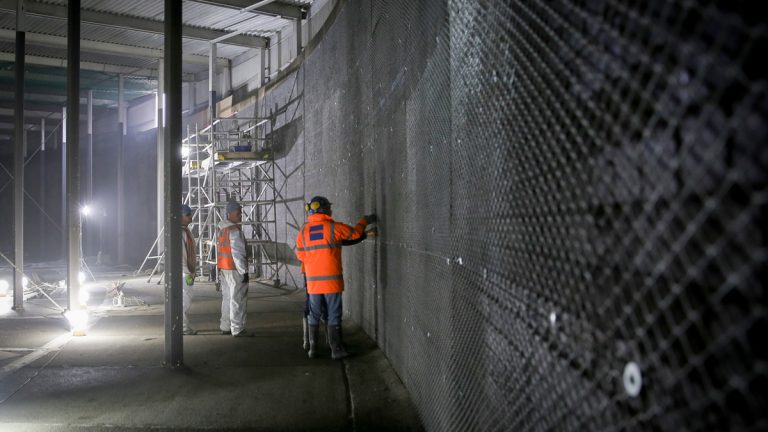
Applying concrete spray to mesh – Courtesy of Stonbury
In the final week, all plant and equipment were removed, final tests conducted to ensure the water tightness of the overbanding and the site cleared and cleaned ready for inspection. A new handrail was installed on the top landing area and bracing applied to the newly installed access ladder.
The final inspection was conducted by the client and the project was deemed completed and handed over.
Conclusion
Stonbury, one of the largest contractors in this sector of the water industry, typically undertakes around 450 refurbishment projects of this nature every year, making the process fairly standard for Stonbury and their supply partners.
The ageing nature of our water supply infrastructure, and the cost of replacing it, means that retaining the structures that can be refurbished should represent a very worthwhile investment where it is technically feasible and financially viable.
Moreover, there is a wealth of knowledge within the sector on the best techniques and materials to use, and considerable experience gained over the years on tackling projects of this nature to anticipate likely problems after work commences and factor these into contract tenders.
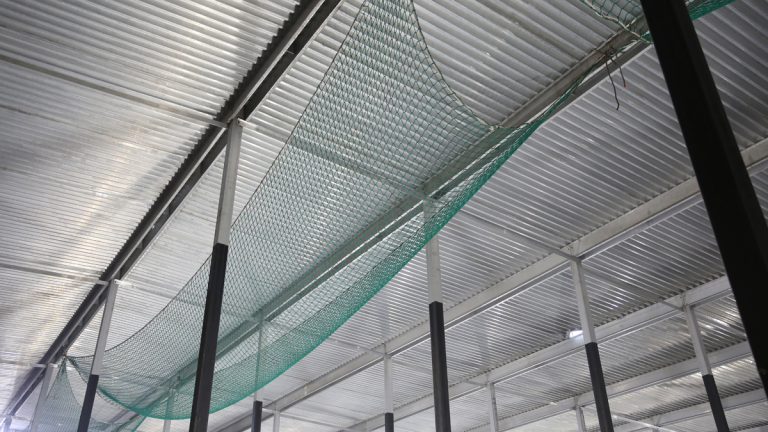
A separate team erected scaffolding and fixed safety netting to the roof, providing safe internal access to the vents – Courtesy of Stonbury
The Malpas Service Reservoir offered some interesting challenges – not least the issue of safely accessing the metal roof (internally and externally) in order to repair the vents and coat the internal surface.
The total contract cost was £500,000. Because of the high specification, particularly on the finish of perimeter walls, it could undoubtedly have been delivered at a lower cost with a lower specification, but this would have impacted upon the future duration of the reservoir.
Stonbury has a legacy of structures within the UK water industry designed and built by our predecessors to last a very long time indeed. With foresight, ingenuity and the application of modern refurbishment techniques, many of these structures can be retained and used for some time to come.




